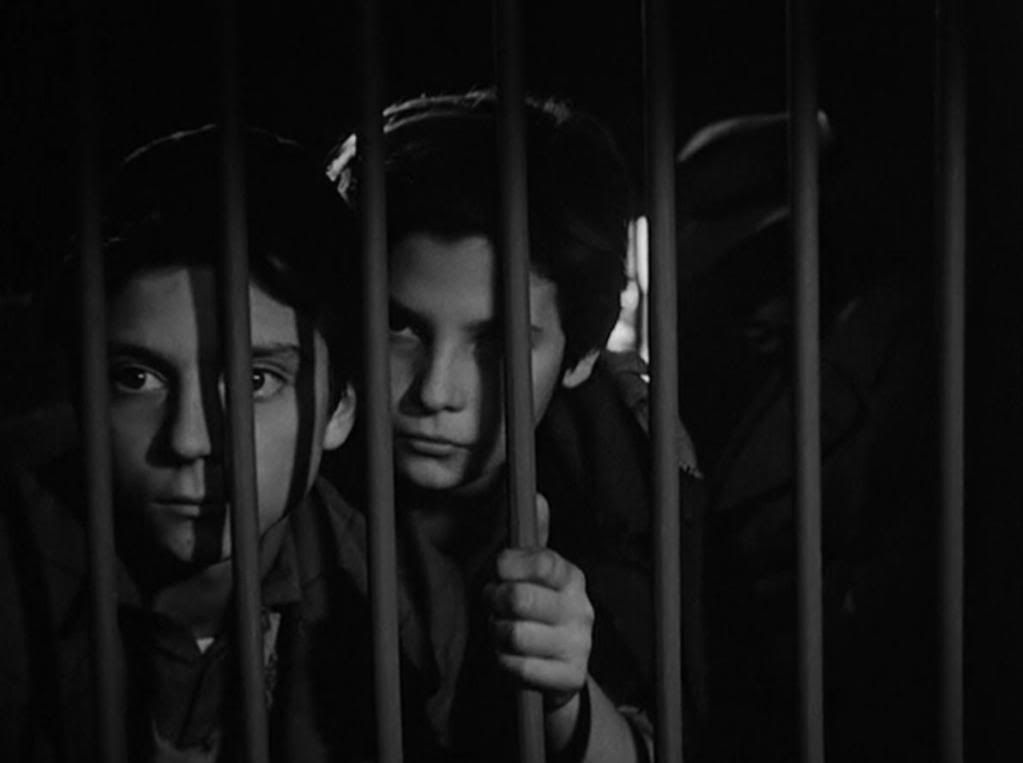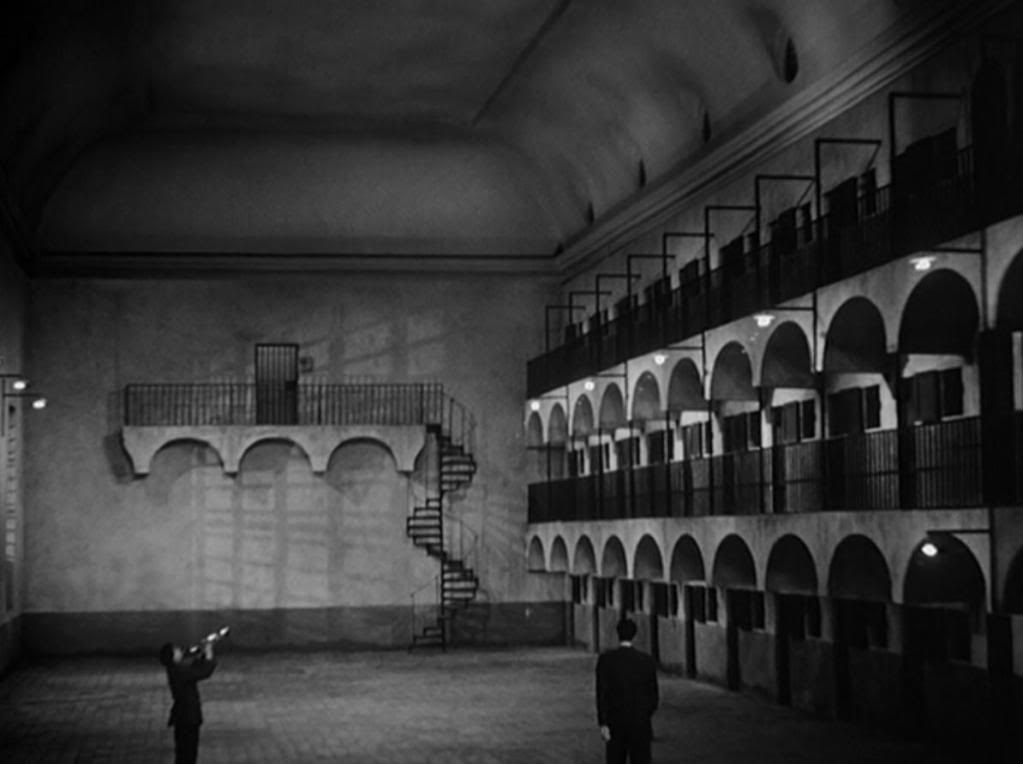
Shoeshine was the first of Vittorio de Sica's postwar films and among the first major works of Italian neorealism. A moving, tragic drama about the effect of postwar poverty on Italian children, the film is bleak, affecting and, without being too overt or polemical, very much socially and politically engaged. This simple, stripped-down expression of melancholy and outrage focuses on two shoeshine boys, Giuseppe (Rinaldo Smordoni) and Pasquale (Franco Interlenghi), who are practically brothers. Pasquale has no family, living on the streets and supporting himself by providing shoeshines for American soldiers and doing any other odd jobs he can pick up. Giuseppe's family is still alive, but in many ways he seems just as independent as his friend, fending for himself on the streets and scraping together whatever he can.
The two friends are saving, improbably, to buy a horse, and their desire for money leads them to get involved in a scam organized by Giuseppe's brother. They quickly wind up in jail, separated from one another and played off against each other by the police in the hopes of getting a confession out of them. De Sica's portrait of the juvenile prison where the kids are sent is scathing, depicting the cruel living conditions to which these boys — many of them arrested merely for the crime of vagrancy, a rampant condition in the rubble of postwar Italy — are subjected. The place is presided over by an uncaring warden who sees the boys only as criminals, little monsters, rather than victims of the poverty and desperation that are plaguing the country. The boys languish in prison for months without even being charged, they're fed disgusting soup and stale bread, and they sleep in cells crawling with bugs.
Prison also tears apart the previously inseparable friends, first isolating them from one another physically by placing them in different cells, and then trying to trick them into separately confessing and identifying Giuseppe's brother and the other men involved in the robbery scam. The boys entered prison more or less as innocents, but once they're inside they become involved with the criminal culture of the much more violent, experienced offenders among their new cellmates and friends.

De Sica relates this sad story with a loose, semi-documentary aesthetic. The film opens with a disclaimer attesting to its fictional narrative and characters, but it always feels real, from its exposé of prison conditions to its poignant story of the relationships between these boys, who are being hardened and toughened by both their jail experiences and the lives they'd already been living on the streets. The cinematography has a casual, shadowy beauty, particularly in the frequent long shots of the prison cellblock that de Sica periodically returns to throughout the film. These images are almost noirish, all stark iron bars and shadows, with a large empty courtyard that fills most of the frame with white space, shunting the actual cells off to the side. The imagery subliminally connects these young delinquents and street urchins with the hardened criminals of prison escape movies and crime flicks, a comparison that's confirmed in the tragic finale.
De Sica also displays great sensitivity to the performances of his child actors, which are touching and raw. He captures them in tight, emotionally charged closeups, particularly Giuseppe and Pasquale, whose increasingly fractious relationship is embodied in their alternately enraged and tearful faces. As the boys split off into opposing gangs in their respective cells, de Sica also captures the enforced intimacy and camaraderie of the cellmates, who cluster together in these tight spaces, with no space to separate them when they sleep.
The film's patient, naturalistic accumulation of details gradually builds to the frenzied, despairing final act, in which movie night in the prison turns into a fiery conflagration and a desperate escape attempt. And then there's the moody gray of the final sequence, on a rural road where the film's last tragedy strikes, and the final image of a horse trotting away into the night provides the sad conclusion to this poignant drama. De Sica would, two years later, craft one of the defining works of neorealism with his even more socially engaged Bicycle Thieves, but the emotional intensity and naturalism of his work were already apparent in this, his first major statement.
I actually prefer it to Bicycle Thief -- which is scarcely chopped liver.
ReplyDeleteA shame gambling debts forced DeSica to become a hack.
While I am so sure I can in good conscience prefer this to BICYCLE THIEVES, I see David's point. This is too often underestimated in DeSica's upper pantheon, which in the last few years for me might actually favor UMBERTO D of the three supreme masterpieces by this seminal figure in neo-realism and humanistic cinema. Once again Ed you provide a banner assessment of of of the greats that should be essential reading for all cineastes. The semi-documentary aesthetic in indeed compelling here, and as you note the film evinces an emotional intensity, and some remarkable performances by the young actors.
ReplyDeleteAn unforgettable poignant work.
Never seen this movie but after your review i think i'll give it a try, all thanks to you, thanks.
ReplyDelete